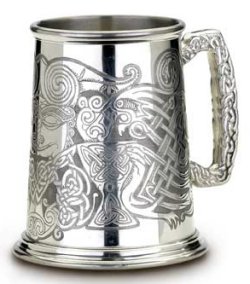More often than not people think that alcohol consumption only harms the body. Alcohol is usually associated with drunkenness and its health benefits are rarely discussed.
Anything taken in excess may harm you but beer has some healthy features which cannot be ignored. As long as you consume your favorite beverage in moderation, you will be able to enjoy its several benefits.
To discover the several perks you can enjoy along with having fun, read on.
Healthy Heart
Recent studies suggest that the human heart loves the beer. Many scientific studies have proven that alcoholic beverages help reduce bad cholesterol levels. Additionally, beer, when taken in moderation, replaces this bad cholesterol with good ones thereby giving you a healthy heart.
Interestingly enough, soon after you have had your german beer stein, you have the urge to relieve yourself. This is not an inconvenience, but proves that alcoholic beverages have the tendency to act as a diuretic. The beer, therefore, cleanses your kidney of substances famous for making kidney stones.
Strengthens Your Bones
Beer has a high concentration of silicon which helps boost the bone strength. With each sip you take off your beer steins, you help increase your bone density. Women going through postmenopausal stage can boost their bone density by having a beer in moderation.
Avoid The Silent Killer – Diabetes
Diabetes has been a silent killer for many years now and affects millions around the world. Many scientific studies reveal that drinking beer in moderation can reduce your chances of getting the disease. Put simply, drinking beer can reduce the sugar level in the body. Studies also suggest that beer drinkers are twenty five percent less likely to develop diabetes as compared to non beer drinkers.
Helps in Digestion
The fact is hardly mentioned anywhere – by those who drink beer or otherwise. Beer is said to contain the fire. This simply means that the popular beverage, when taken in moderation, allows you to comfortably cleanse your colon enabling you to achieve a better bowel movement.
Low in Carbohydrates
Although beer is not necessarily free of carbs, it is not the most carb filled alcoholic beverage. In fact, a small bottle of beer is said to contain no more than five grams of carbohydrates. Therefore, you can avoid gaining weight while drinking and enjoying a good night out with friends.
Delicious Delicacies
Not totally healthy but definitely good for your taste buds. Mixing beer with ice cream can be extremely delicious. You can mix a pint of your favorite beer with a vanilla bean ice cream and enjoy a good time with friends.
Beer does give you good health reasons to enjoy, but it must be kept in mind to consume it in moderation and not go overboard with drinking.



















